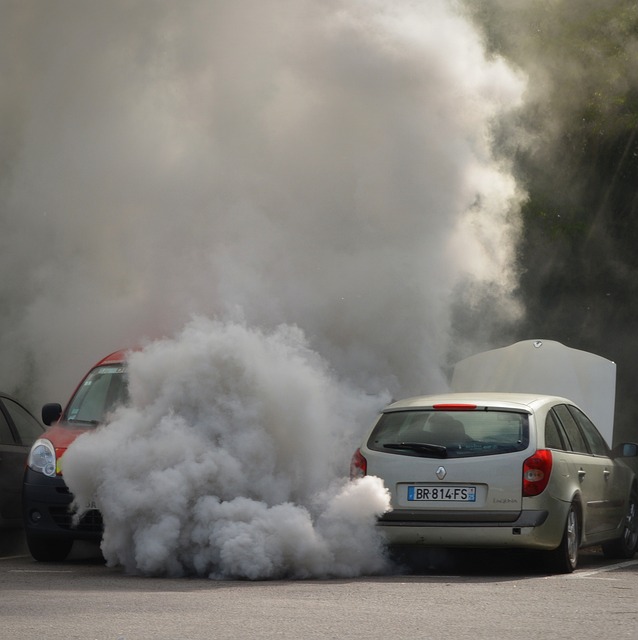
The impact of air pollution on public health and the environment cannot be overstated. As we strive for progress and technological advancements, the need for stringent air quality policies and effective pollution control measures becomes increasingly vital. Air quality refers to the composition of gases and particles present in the Earth’s atmosphere. While natural sources such as dust storms and volcanic eruptions can contribute to air pollution, human activities are the primary culprits. Industrial emissions, vehicular exhaust, and the burning of fossil fuels release harmful pollutants into the air, endangering our well-being.
The repercussions of breathing polluted air are grave. Health problems such as respiratory diseases, cardiovascular disorders, and even premature death are directly linked to prolonged exposure to pollutants. Additionally, air pollution detrimentally affects ecosystems by damaging flora and fauna, disrupting food chains, and degrading natural resources.
To combat this pressing issue, governments and organizations around the world are implementing strategies and regulations aimed at monitoring and improving air quality. These initiatives focus on reducing emissions from industries, promoting sustainable transportation systems, and encouraging the adoption of cleaner energy sources.
Furthermore, pollution control measures seek to mitigate the impact of air pollutants already present in the atmosphere. Technologies such as air filters, electrostatic precipitators, and scrubbers are employed to trap or eliminate harmful substances from industrial emissions. Additionally, public awareness campaigns promote responsible waste management and encourage individuals to adopt environmentally-friendly practices.
Impacts of Air Pollution on Human Health
Air pollution poses significant threats to human health, with long-term exposure resulting in various adverse effects on the respiratory, cardiovascular, and immune systems. The following sections highlight some of the major health implications associated with air pollution.
Respiratory Diseases
Air pollution is strongly linked to respiratory diseases such as asthma, chronic obstructive pulmonary disease (COPD), and lung cancer. Particulate matter (PM) and certain gases, including nitrogen dioxide and sulfur dioxide, can irritate the respiratory system, leading to inflammation, wheezing, and shortness of breath. Prolonged exposure to these pollutants can aggravate existing respiratory conditions, diminish lung function, and increase the risk of developing respiratory infections.
Cardiovascular Disorders
Air pollution not only affects the respiratory system but also poses significant risks to cardiovascular health. Fine particulate matter (PM2.5) and pollutants like carbon monoxide and ozone can enter the bloodstream, triggering systemic inflammation and oxidative stress.
These processes contribute to the development of cardiovascular diseases, including heart attacks, strokes, and hypertension. Particularly vulnerable populations such as the elderly and individuals with pre-existing heart conditions face heightened risks.

Impaired Immune Function
Research suggests that air pollution can weaken the immune system, impairing its ability to defend against infections and increasing susceptibility to respiratory illnesses. Individuals exposed to high levels of air pollutants may experience more frequent respiratory infections, allergic reactions, and respiratory tract inflammation. Moreover, air pollution can disrupt the balance of immune cells, potentially leading to chronic disorders such as autoimmune diseases.
Adverse Birth Outcomes
Pregnant women exposed to air pollution are at heightened risk of adverse birth outcomes including preterm birth, low birth weight, and developmental issues in children. Prenatal exposure to air pollutants, such as polycyclic aromatic hydrocarbons (PAHs) and heavy metals, can cross the placental barrier and affect fetal development. This can lead to long-term health consequences, including respiratory and neurological disorders, impacting the child’s quality of life.
Cancer
While the association between air pollution and cancer is complex, certain pollutants have been identified as carcinogenic. The inhalation of fine particulate matter, volatile organic compounds (VOCs), and hazardous air pollutants like benzene and formaldehyde increases the risk of developing lung cancer.

It can also lead to the development of other respiratory tract malignancies. Long-term exposure to these carcinogens, particularly in heavily industrialized areas, raises concerns for public health.
Ecological Consequences of Air Pollution
Air pollution not only poses a significant threat to human health but also has severe consequences for the environment and ecosystems. As pollutants are released into the atmosphere, they can interact with natural resources, disrupt ecological balance, and harm various flora and fauna. This section explores the ecological implications of air pollution, emphasizing the importance of taking immediate action to preserve our fragile ecosystems.
- Impact on Biodiversity
Air pollution plays a detrimental role in the decline of biodiversity worldwide. Pollutants such as sulfur dioxide and nitrogen compounds can deposit onto soil and water bodies, causing acidification. Acid rain, a direct result of air pollution, damages forests, freshwater ecosystems, and reduces soil fertility. This, in turn, disrupts the habitats of numerous plant and animal species, leading to a decline in overall biodiversity.
- Forest Degradation
Air pollution poses a significant threat to forests, affecting both their health and productivity. Particulate matter and harmful gases can accumulate on tree leaves, hindering photosynthesis and reducing the tree’s ability to absorb necessary nutrients. Furthermore, pollutants can weaken trees, making them more susceptible to diseases and infestations. Over time, this degradation can lead to the loss of entire forest ecosystems, devastating wildlife habitats and impacting the global carbon cycle.
- Disruption of Ecosystem Services
Ecosystems provide crucial services such as clean air, water purification, and climate regulation. Air pollution interrupts these services, impairing the overall functionality of ecosystems. For instance, ozone, a pollutant produced by vehicle emissions and industrial activities, damages plant cells and reduces the capacity of vegetation to absorb carbon dioxide. This interference with the natural carbon cycle exacerbates climate change and contributes to global warming.
- Disturbance of Food Chains
Air pollution has far-reaching effects on food chains, disrupting the delicate balance of predator-prey relationships. Pollutants can contaminate water bodies and soil, affecting aquatic organisms and the plants they rely on. This disruption further cascades up the food chain, impacting fish populations, marine life, and eventually even land-based animals, including humans. The loss of key species can lead to imbalances in entire ecosystems, with potentially severe consequences.
- Threat to Endangered Species
Endangered species are particularly vulnerable to the effects of air pollution. Habitat degradation, caused by pollutants damaging their natural surroundings, poses a significant risk to their survival. Species already on the brink of extinction may struggle to adapt to the additional stressors of air pollution, further diminishing their chances of recovery. Protecting these species and their habitats becomes imperative in mitigating the long-term ecological consequences of air pollution.
Common Air Pollutants and Sources
Air pollution is composed of various pollutants, each with its own sources and characteristics. Understanding these pollutants is essential in formulating effective pollution control measures. The following section provides an overview of some of the most common air pollutants and their primary sources.
Particulate Matter (PM)

Particulate matter refers to a mixture of solid particles and liquid droplets suspended in the air. These particles come in a range of sizes, with PM10 (particles with a diameter of 10 micrometers or less) and PM2.5 (particles with a diameter of 2.5 micrometers or less) being the most commonly measured categories.
Sources of PM include combustion processes such as burning fossil fuels (e.g., vehicle emissions, coal-fired power plants) and industrial activities. Natural sources such as dust storms and wildfires also contribute to PM levels.
Nitrogen Oxides (NOx)
Nitrogen oxides are a group of gases that consist of nitrogen dioxide (NO2) and nitrogen monoxide (NO). The primary sources of NOx emissions are the combustion of fossil fuels in vehicles, power plants, and industrial processes. NO2 is particularly problematic as it contributes to the formation of ground-level ozone (smog) and is a respiratory irritant.
Sulfur Dioxide (SO2)
Sulfur dioxide is a gas emitted when fossil fuels, particularly coal and oil, are burned for electricity generation or industrial processes. It is also released during the smelting of sulfur-containing ores. SO2 can cause respiratory problems and contribute to the formation of acid rain when it reacts with water in the atmosphere.
Carbon Monoxide (CO)
Carbon monoxide is a colorless and odorless gas produced by the incomplete combustion of fossil fuels. Major sources of CO include vehicle exhaust, industrial processes, and residential heating systems. CO can be particularly dangerous as its inhalation can lead to reduced oxygen-carrying capacity in the bloodstream, resulting in oxygen deprivation in vital organs.
Volatile Organic Compounds (VOCs)
Volatile organic compounds are a diverse group of chemicals that can easily evaporate at room temperature. They are released from a wide range of sources, including fuel combustion (e.g., vehicle emissions), industrial processes, and the use of solvents in household products. VOCs contribute to the formation of ground-level ozone and can have adverse health effects on humans and ecosystems.
Lead (Pb)
Lead is a highly toxic heavy metal that can cause serious health problems, particularly in children. While the use of leaded gasoline has significantly decreased, other sources such as lead-acid batteries, industrial processes, and certain paints and ceramic products still contribute to lead emissions.
These are just a few examples of common air pollutants, but many other substances, such as ozone (O3), mercury (Hg), and various volatile inorganic compounds (e.g., ammonia, hydrogen sulfide) also contribute to air pollution. Identifying the sources and characteristics of these pollutants allows policymakers, scientists, and communities to develop targeted strategies to reduce emissions and improve air quality.

Strategies for Improving Air Quality
In our collective efforts to combat air pollution, it is vital to implement effective strategies that can significantly improve air quality and protect public health. This section explores various initiatives and approaches used to reduce emissions, promote sustainable practices, and enhance pollution control measures.
- Transition to Clean Energy Sources
Transitioning from traditional fossil fuel-based energy sources to cleaner alternatives is a crucial step in improving air quality. Investing in renewable energy, such as solar, wind, and hydropower, reduces the reliance on coal-fired power plants and decreases emissions of pollutants such as sulfur dioxide, nitrogen oxides, and particulate matter. Implementing policies that incentivize the adoption of clean energy technologies can accelerate this transition and contribute to significant air quality improvements.
- Enhance Public Transportation and Sustainable Mobility
Promoting sustainable transportation systems is essential in reducing air pollution caused by vehicle emissions. Encouraging the use of public transportation, cycling, and walking can help reduce the number of cars on the road and subsequently decrease pollutant emissions. Developing efficient public transport networks, implementing bike-sharing programs, and creating pedestrian-friendly infrastructure are all effective strategies to reduce reliance on private vehicles and improve air quality in urban areas.
- Implement Stringent Emission Standards and Regulations
Governments and environmental agencies play a critical role in improving air quality by implementing strict emission standards and regulations for industries and vehicles. By enforcing limits on pollutant emissions and requiring the use of advanced pollution control technologies, these measures can significantly reduce the release of harmful substances into the atmosphere. Regular monitoring and enforcement of these regulations are essential in ensuring long-term improvements in air quality.
- Promote Sustainable Urban Planning and Design
Well-designed and sustainable urban planning can contribute to improved air quality. Emphasizing compact and mixed-use development, reducing urban sprawl, and implementing green spaces and parks in cities can help mitigate the effects of pollution. These measures promote active transportation, reduce vehicular congestion, and provide natural filtration systems that help purify the air.
- Encourage Responsible Waste Management

Proper waste management practices are crucial in preventing the release of pollutants into the air. Implementing recycling programs, promoting composting, and enforcing regulations on waste incineration and disposal can significantly reduce emissions of harmful gases and particulate matter. Collaborating with communities to raise awareness about responsible waste management and encouraging individual actions can help mitigate pollution at the grassroots level.
- Foster Research and Innovation
Investing in research and development of innovative technologies and solutions is essential in improving air quality. Supporting scientific studies on air pollution, its impacts, and effective mitigation strategies can provide valuable insights for policy-making and help develop cutting-edge pollution control measures. Encouraging collaboration between academia, industry, and government agencies can accelerate the development and implementation of sustainable solutions.
Improving air quality requires a multi-faceted approach that encompasses regulatory measures, technological advancements, and individual action. By transitioning to cleaner energy sources, promoting sustainable transportation systems, enforcing emission standards, implementing sustainable urban planning, encouraging responsible waste management, and fostering research and innovation, we can achieve significant improvements in air quality and protect the health and well-being of present and future generations.


